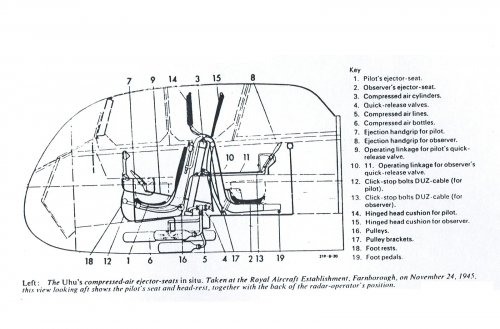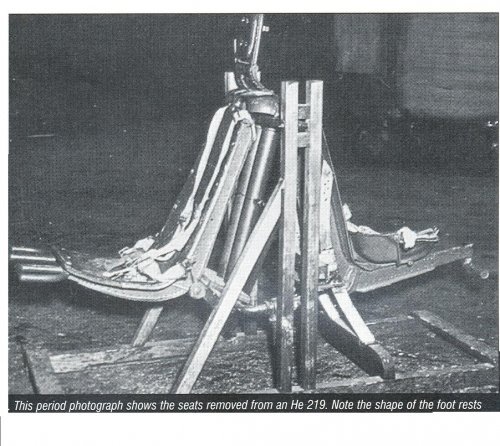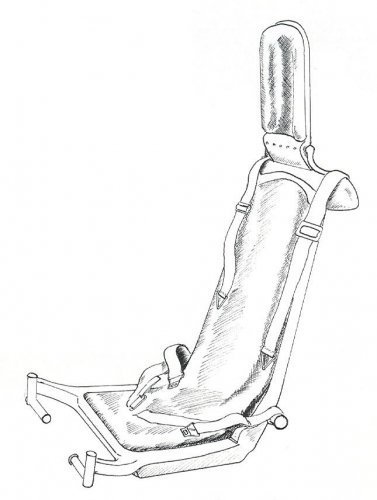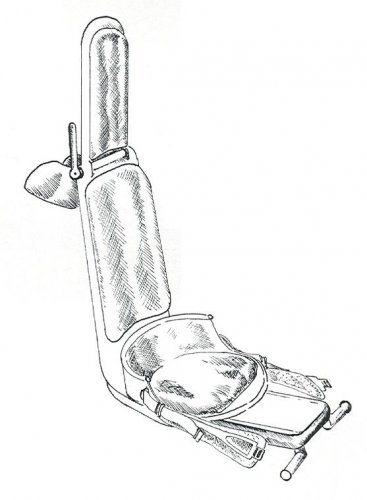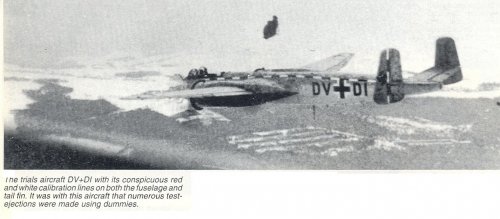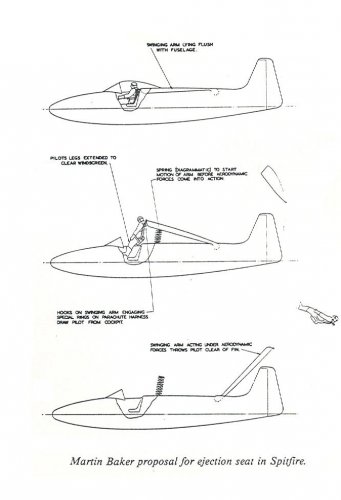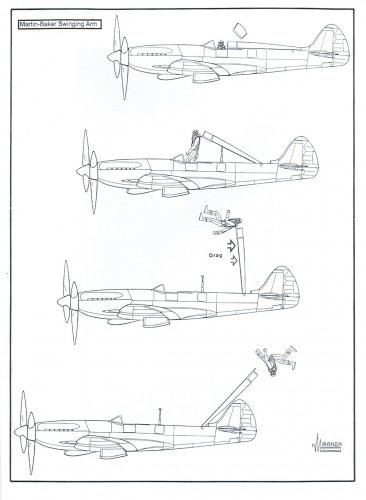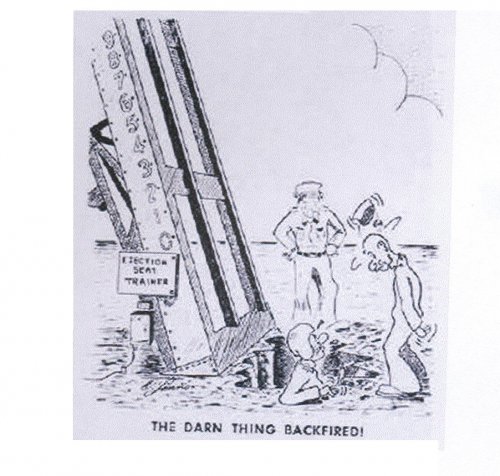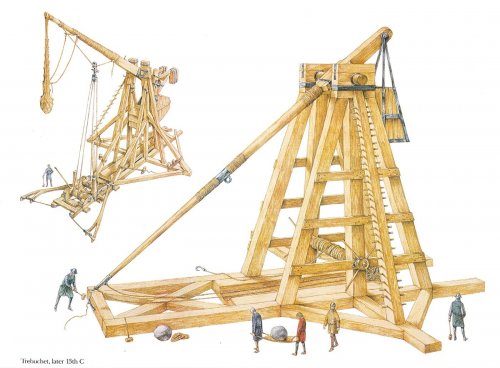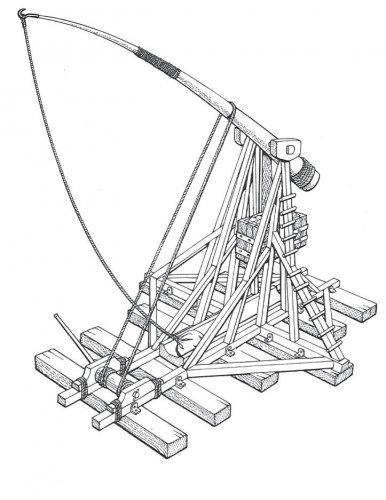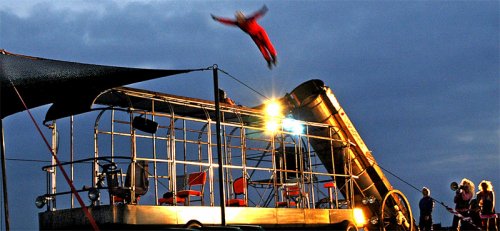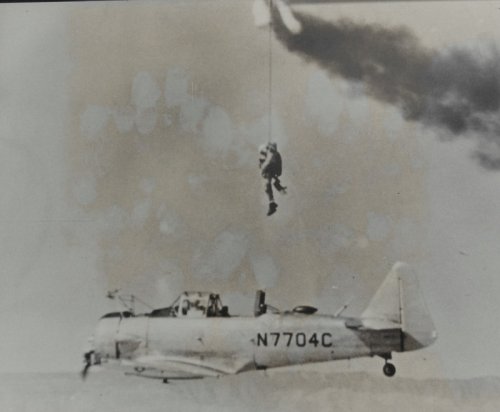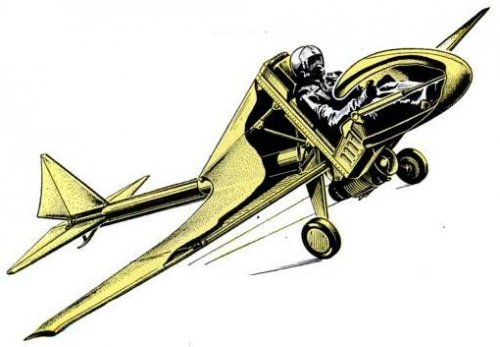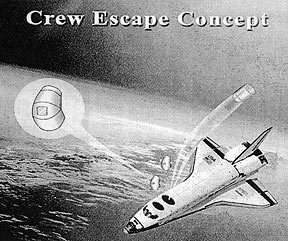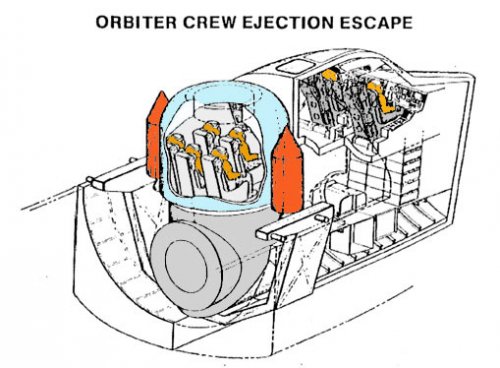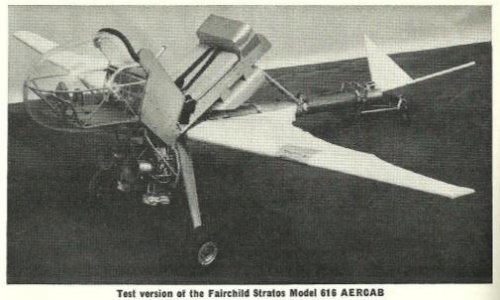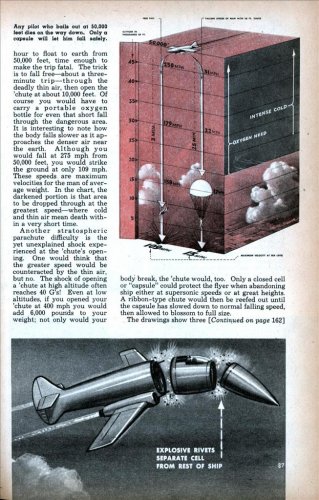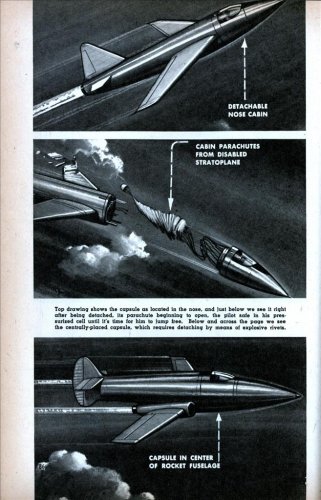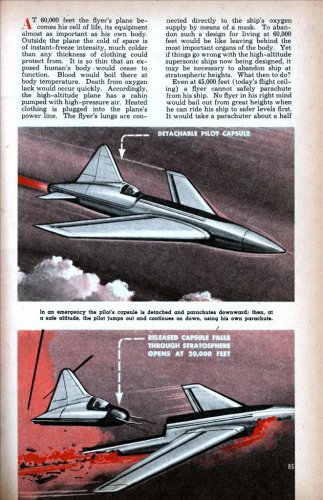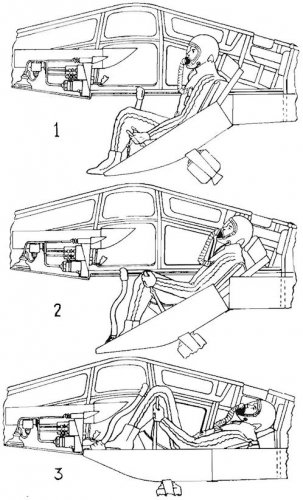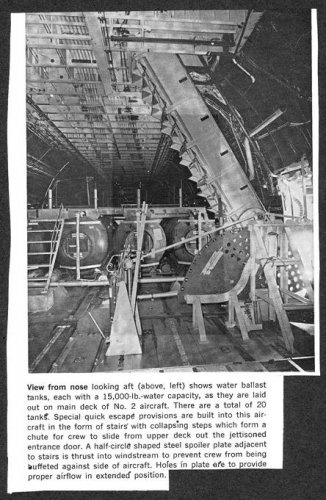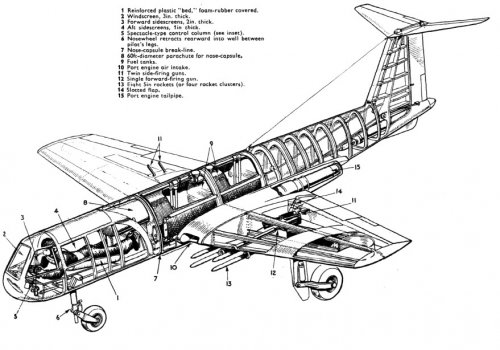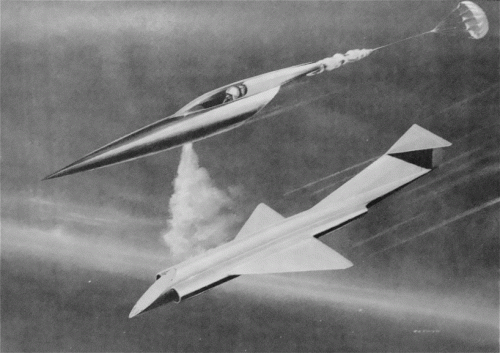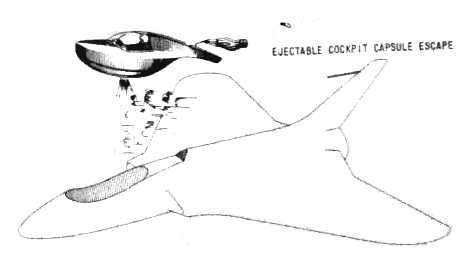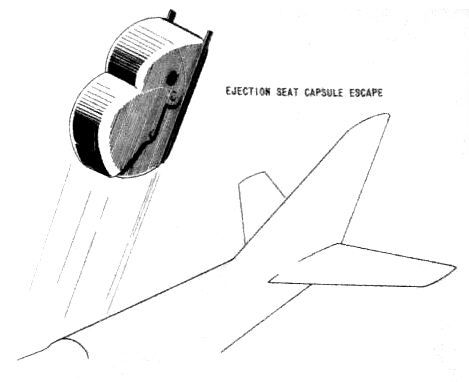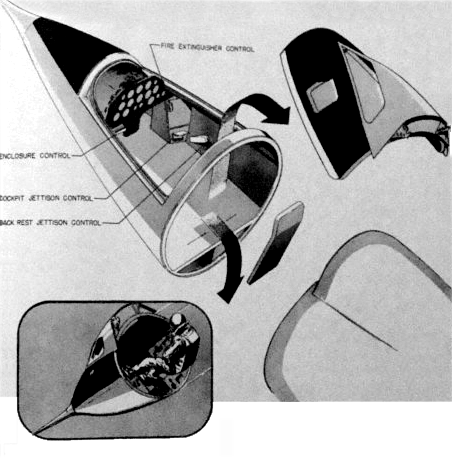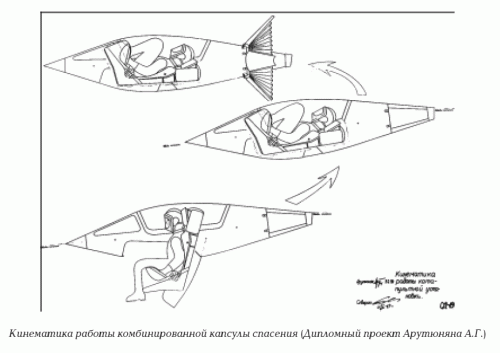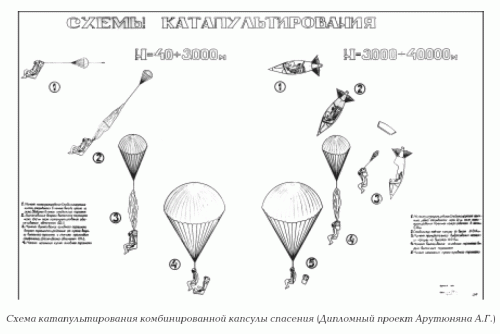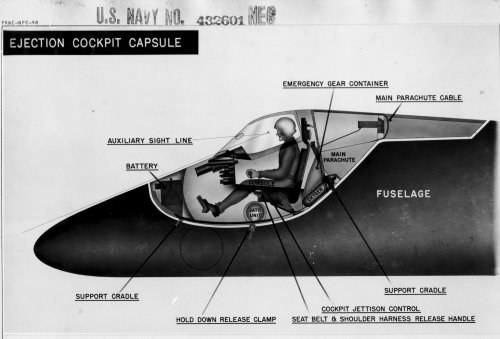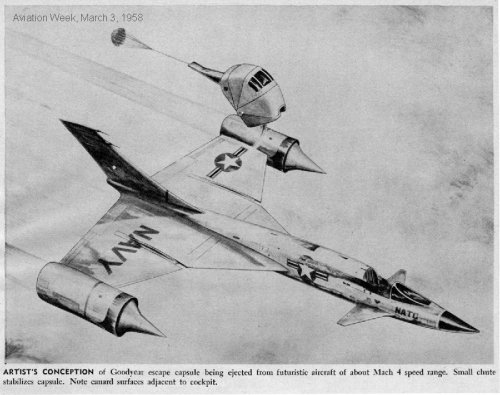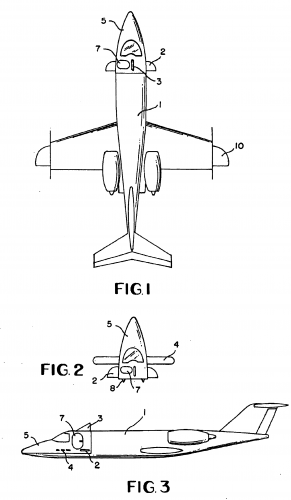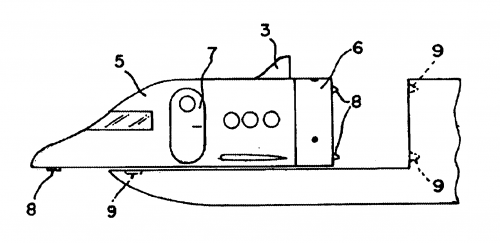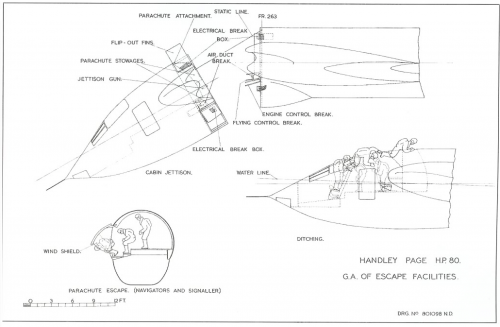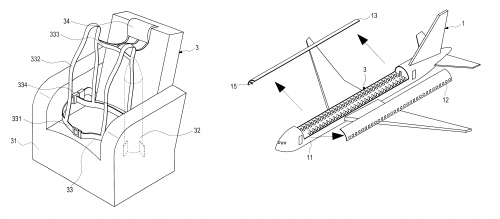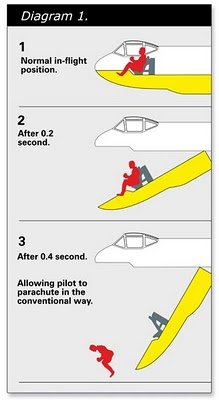You are using an out of date browser. It may not display this or other websites correctly.
You should upgrade or use an alternative browser.
You should upgrade or use an alternative browser.
Interesting escape concepts.
- Thread starter Sferrin
- Start date
- Joined
- 13 August 2007
- Messages
- 8,446
- Reaction score
- 10,999
wounderfull art Justo
poor testpilots
who had to test all those Escape concept prototypes
poor testpilots
who had to test all those Escape concept prototypes
Some very interesting posts there - thanks.
The Do-335 systemhad some apparently very gruesome results - I think it was one of Captain Eric "Winkle" Brown's book that discussed the results - pilots having arms ripped off etc.
Regards,
Greg
The Do-335 systemhad some apparently very gruesome results - I think it was one of Captain Eric "Winkle" Brown's book that discussed the results - pilots having arms ripped off etc.
Regards,
Greg
Another one showing the Sky Knight's escape system:

Regards,
Greg
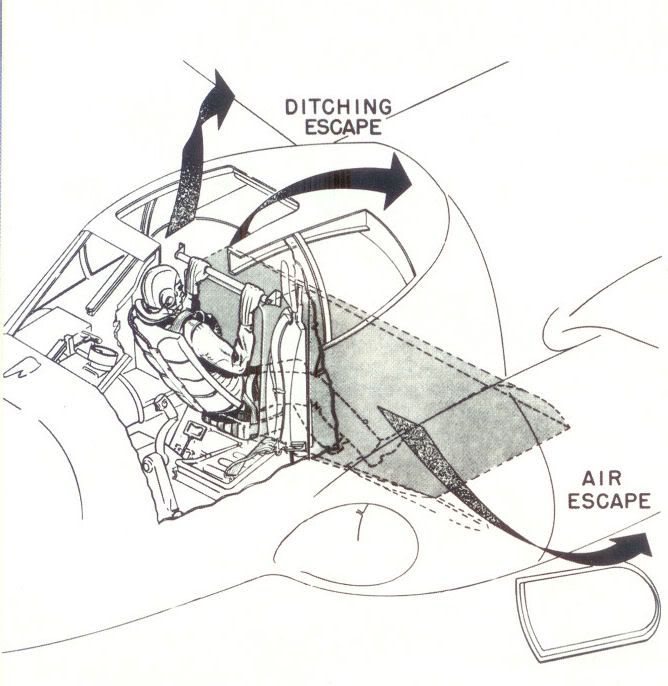
Regards,
Greg
funkychinaman
ACCESS: Restricted
- Joined
- 10 November 2008
- Messages
- 33
- Reaction score
- 1
The one where the ejection seat turns into a helicopter/auto-gyro is fascinating, if only to debate the ethics of it. Would it be okay to shoot at it? Obviously shooting a guy in his chute is bad form, but I doubt anyone would pass up shooting at a rescue chopper going after a downed pilot. This would be somewhere in the middle.
- Joined
- 11 March 2006
- Messages
- 8,625
- Reaction score
- 3,804
Shooting at someone is always bad behaviour, that's why the communication systems of
modern fighters are most important : To give the opportunity to the pilots to talk, before
pulling the trigger ! ;D
Sorry for that...
A man in such a rotor chute is nothing else, than with a conventional parachute : A man trying
to save his live. A CSAR heli, although live saving, too, additionally is a measure to save the
fighting power of a soldier. AFAIK that was the rationale, that the RAF began shooting at SAR
aircraft during WW II. With a foldable autogyro/ejection seat there may be the problem, of course,
that an enemy might mistake it for an intentional intruder à la James Bond and then, shooting at him
would be quite ok, without regards, of course of my first point !
modern fighters are most important : To give the opportunity to the pilots to talk, before
pulling the trigger ! ;D
Sorry for that...
A man in such a rotor chute is nothing else, than with a conventional parachute : A man trying
to save his live. A CSAR heli, although live saving, too, additionally is a measure to save the
fighting power of a soldier. AFAIK that was the rationale, that the RAF began shooting at SAR
aircraft during WW II. With a foldable autogyro/ejection seat there may be the problem, of course,
that an enemy might mistake it for an intentional intruder à la James Bond and then, shooting at him
would be quite ok, without regards, of course of my first point !
OM
ACCESS: Top Secret
...Anyone have a scan of Bob Stevens' ejector seat for a Jap Zero. IIRC, it involved an orange crate with a pineapple underneath. To eject, you puilled the pin and counted to three.
funkychinaman
ACCESS: Restricted
- Joined
- 10 November 2008
- Messages
- 33
- Reaction score
- 1
Jemiba said:A man in such a rotor chute is nothing else, than with a conventional parachute : A man trying
to save his live. A CSAR heli, although live saving, too, additionally is a measure to save the
fighting power of a soldier. AFAIK that was the rationale, that the RAF began shooting at SAR
aircraft during WW II. With a foldable autogyro/ejection seat there may be the problem, of course,
that an enemy might mistake it for an intentional intruder à la James Bond and then, shooting at him
would be quite ok, without regards, of course of my first point !
But a guy in a parachute would be coming straight down. (I know there are chick pilots out there, but I'm going to use male pronouns because it's easier.) He's out of the fight. Once he lands, he's fair game. But a guy in the mini-helicopter/autogyro would presumably try to make a beeline for friendly territory. He's trying to preserve his fighting power.
- Joined
- 4 May 2008
- Messages
- 2,439
- Reaction score
- 762
GTX said:The Do-335 systemhad some apparently very gruesome results - I think it was one of Captain Eric "Winkle" Brown's book that discussed the results - pilots having arms ripped off etc.
In "Wings of the Luftwaffe" Eric Brown tells of how a couple of test pilots were found in the cockpit with their arms ripped off. Apparently, in order to eject, you had to pull on handles that would release the canopy. Except the handles were part of the canopy itself, so the story goes that if you tried to release the canopy, once the slipstream caught it, your arms would depart with it.
At least that's the "official" version.
Lauge
ACCESS: Secret
- Joined
- 30 January 2008
- Messages
- 434
- Reaction score
- 55
AeroFranz said:GTX said:The Do-335 systemhad some apparently very gruesome results - I think it was one of Captain Eric "Winkle" Brown's book that discussed the results - pilots having arms ripped off etc.
In "Wings of the Luftwaffe" Eric Brown tells of how a couple of test pilots were found in the cockpit with their arms ripped off. Apparently, in order to eject, you had to pull on handles that would release the canopy. Except the handles were part of the canopy itself, so the story goes that if you tried to release the canopy, once the slipstream caught it, your arms would depart with it.
At least that's the "official" version.
Aahh..the good old "Hemingway" system (as in....wait for it......"Farewell to Arms")
Regards & all,
Thomas L. Nielsen
Denmark
- Joined
- 4 May 2008
- Messages
- 2,439
- Reaction score
- 762
A nice Popular Mechanics article on AERCAB (aircrew escape/rescue capability), briefly mentioned at the beginning of the thread
http://books.google.com/books?id=M9gDAAAAMBAJ&lpg=PA90&ots=F6VdU0Azsq&dq=fairchild%20hiller%20aercab&pg=PA93#v=onepage&q=&f=false
http://books.google.com/books?id=M9gDAAAAMBAJ&lpg=PA90&ots=F6VdU0Azsq&dq=fairchild%20hiller%20aercab&pg=PA93#v=onepage&q=&f=false
Attachments
XP67_Moonbat
ACCESS: Top Secret
- Joined
- 16 January 2008
- Messages
- 2,271
- Reaction score
- 543
OM
ACCESS: Top Secret
...While searching for a Genesis clip, I came across *this* one thanks to YouTube's search engine being a bit wonky:
http://www.youtube.com/watch?v=HeXCEo62Mso
http://www.youtube.com/watch?v=HeXCEo62Mso
- Joined
- 26 May 2006
- Messages
- 34,897
- Reaction score
- 15,759
hesham said:Hi,
There was anther old escape concept from the 1970s,the Fairchild Model-616
AERCAB aircrew escape rescue capability for combat aircraft,the purpose of
AERCAB was to permit recovery of aircrew who eject from their aircraft over
enemy territory and to provide capability to fly the ejection seat up to 43nm
(50 miles;80 km)at up to 100 knots (115mph;185 km/h) prior to vertical descent
by personal parachute.
A real picture to a test version of the Fairchild-Hiller
Model-616 AERCAB.
Attachments
- Joined
- 26 May 2006
- Messages
- 34,897
- Reaction score
- 15,759
Attachments
I read an article once (with a photo) about escape system for large passenger planes. The fuselage had two layers, the second (inner) one (from pilot's cabin door to rear exit door) was to be ejected with all the passengers and cabin crew and land using three large parachutes. The pilots had ejection seats.
- Joined
- 3 June 2006
- Messages
- 3,094
- Reaction score
- 3,963
Recently revealed by the U.S.A.F. is this escape capsule which was originally designed for the Convair F-102. After the ejection sequence is set into motion the pilot and seat are moved from an upright to a supine position. The pilot can then withstand the 12g ejection loads imposed on him when the capsule is fired from the aeroplane.
Source: http://crimso.msk.ru/Site/Arts/Art5854.htm
Original Source: Air Pictorial 1956-02
Attachments
- Joined
- 3 June 2006
- Messages
- 3,094
- Reaction score
- 3,963
The magazines Wings 04/2003 to 06/2003 have great articles showing interesting escape concepts. The most images from those articles were posted here in thy topic by Justo. 
Great stuff, Bill, thanks.
I don't think we have mentioned in this thread the Martin Mighty Midget (see the 1954 Martin Close Support aircraft thread) design for a prone pilot light ground attack aircraft. As bailing out or ejecting from the armored cockpit from a prone position was problematic, the entire capsule was detached and parachuted down. Up-ship.com has the original Martin Mighty Midget brochure for sale, well worth it, one of my favorites. This cutaway drawing is from the same site.
Cheers,
Matthew
I don't think we have mentioned in this thread the Martin Mighty Midget (see the 1954 Martin Close Support aircraft thread) design for a prone pilot light ground attack aircraft. As bailing out or ejecting from the armored cockpit from a prone position was problematic, the entire capsule was detached and parachuted down. Up-ship.com has the original Martin Mighty Midget brochure for sale, well worth it, one of my favorites. This cutaway drawing is from the same site.
Cheers,
Matthew
Attachments
- Joined
- 25 June 2009
- Messages
- 14,753
- Reaction score
- 6,145
- Joined
- 11 March 2006
- Messages
- 8,625
- Reaction score
- 3,804
A similar system jettisoning the whole cockpit section is described here
http://www.secretprojects.co.uk/forum/index.php/topic,566.msg184378.html#new
(tried to prevent posting the picture twice), but with the tail surfaces it should form
a complete rescue glider.
http://www.secretprojects.co.uk/forum/index.php/topic,566.msg184378.html#new
(tried to prevent posting the picture twice), but with the tail surfaces it should form
a complete rescue glider.
- Joined
- 9 October 2009
- Messages
- 21,973
- Reaction score
- 13,622
http://www.dtic.mil/dtic/tr/fulltext/u2/423907.pdf
INTRODUCTION
The purpose of this program was to provide a rocket catapult
for use in personnel ejection from TRECOM test hover craft vehicles.
These vehicles are fan driven, operating at low altitude.
The scope of the program follows:
(1) Design a rocket catapult for a specific lightweight seat,
the LW-l.*
(2) Conduct tests to assure reliable operation within required
limits of acceleration and rate of onset.
(3) Supply seven rocket catapults for installation in TRECOM
test hover craft.
The XK13 Catapult was developed to meet the ejection needs of
flight crewmen using LW-l seats in experimental flying, platformtype,
U. S. Army vehicles. This catapult is a modified M9 catapult,
and fills the seat propulsion requirements for recovery at zero
altitude and zero velocity.
Low cost was the dominant factor that influenced the design
approach to the XK13 catapult. Components developed and qualified
previously for Air Force catapults were used in its construction.
The modifications were made to provide reduced thrust levels to
both booster and sustainer phases, required because of the weight
of the LW-l seat compared to standard Air Force ejection seats.
This report presents a description of catapult operation, performance
characteristics, and results of testing covducted on the
XM13 catapult.
_____________________
*The LW-l seat is explained in detail in "Ground Operational Recovery
Tests of the LW-I Ejection Seat," TCREC Technical Report 62-47,
June 1962.
- Joined
- 9 October 2009
- Messages
- 21,973
- Reaction score
- 13,622
- Joined
- 25 June 2009
- Messages
- 14,753
- Reaction score
- 6,145
Soviet engineer A. G. Arutyunyan developed some escape pod concepts during the late 1940s for his degree project.
Here are three images from his original work:
Here are three images from his original work:
- Combined bailout rescue capsule
- The cinematics of the combined rescue capsule
- Experimental aircraft with catapult installation in the form of capsules combined rescue pilot
Attachments
Stargazer2006 said:Some early 1950s Lockheed escape concepts:
Two of those might be Lockheed's, but the second one is from a 1951 Douglas study and the last is the actual bailout provision on the D-558s. The third one looks like the one in a Goodyear study. (Edit: Justo had already posted some of those back on page 2 and identified the first one as being from Douglas.)
Attachments
I remember reading an old article (probably some 15-20 years ago) about escape concept for large passenger planes. Aircraft would have been built with double hull. The whole passenger section, from cockpit to the rear end would be jettisoned upwards and then several large parachutes would be deployed. I think there were even inflatable rafts on the bottom in case the landing was on water. Cabin crew would use conventional ejection seats. Anyone heard something about that? Would that work?
Zeppelin
ACCESS: Confidential
- Joined
- 28 May 2009
- Messages
- 87
- Reaction score
- 30
There are a few patents you can find with the help of Google, http://www.google.com/patents/US6695257 and http://www.google.com/patents/US6776373 none of them look to show any further engineering other than diagrams for the Patent registration. I'm not sure on how the individual cabin ejection seats could avoid being a danger in themselves, could create a price demand to be in some of the 1st seats that go - cheap seats would be the last. and how much servicing would each seat require. Also how big a parachute set would a whole passenger cabin require, it does sound like a dream solution, but one that could bankrupt the airline industry. Also back in Aug 2009 there was this posted by GTX, under Handley Page Victor Projects http://www.secretprojects.co.uk/forum/index.php/topic,6249.0.html showing a proposed Victor Escape system where the whole front cabin becomes an escape module, shame that the MOD never thought that worth funding.
Attachments
- Joined
- 31 May 2009
- Messages
- 1,154
- Reaction score
- 674
Zeppelin said:- ejection seats for passenger planes !!
The flight crew apparently does not deserve the same courtesy...
- Joined
- 3 September 2006
- Messages
- 1,475
- Reaction score
- 1,471
Great way to get rid of a bunch of rowdy passengers!bigvlada said:The whole passenger section, from cockpit to the rear end would be jettisoned
"Captain Speaking. This is the last warning. Next noise, you row home..."
Similar threads
-
Need help please - What aircraft is this ???
- Started by Pioneer
- Replies: 10
-
Some interesting battlfield support concepts. Tilt rotors, turboprop craft, etc
- Started by Sferrin
- Replies: 3
-
HELICOPTER EMERGENCY ESCAPE CONCEPTS
- Started by moin1900
- Replies: 12
-
Obscure Personnel recovery/extraction method, similar to Fulton's Skyhook
- Started by AeroFranz
- Replies: 26
-

